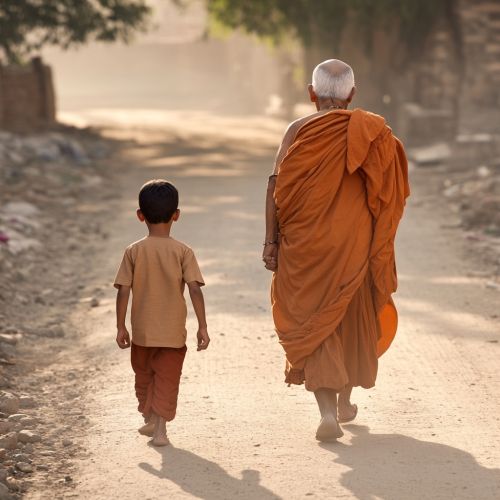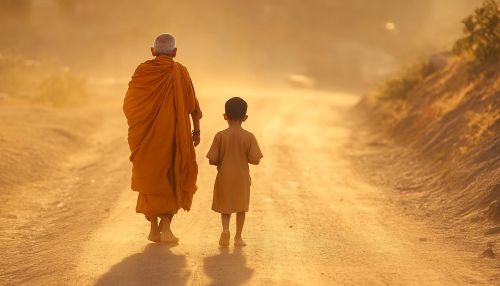Kim (novel)
Overview
Kim is a novel by Rudyard Kipling, first published serially in McClure's Magazine from December 1900 to October 1901 and in Cassell's Magazine from January to November 1901. The book was first published in book form by Macmillan & Co. Ltd in October 1901. It is considered one of Kipling's masterpieces and has been praised for its detailed portrayal of the diverse cultures and landscapes of British India.
Plot Summary
The novel is set against the backdrop of the Great Game, the political conflict between Britain and Russia in Central Asia. The protagonist, Kimball O'Hara, known as Kim, is an orphaned son of a British soldier who grows up as a street urchin in Lahore. The story follows Kim's adventures as he becomes involved in espionage and political intrigue.
Kim befriends a Tibetan Lama, Teshoo Lama, and becomes his chela (disciple). Together, they embark on a journey across northern India, with Kim acting as a guide. Along the way, Kim is recruited by the British secret service to work as a spy. The novel explores themes of identity, colonialism, and the clash of cultures.
Characters
Kimball O'Hara
Kim is the central character of the novel. He is a resourceful and street-smart boy who can blend into various cultural settings. His mixed heritage and upbringing allow him to navigate the complexities of British and Indian societies.
Teshoo Lama
Teshoo Lama is a Tibetan Buddhist monk on a pilgrimage to find the River of the Arrow, which he believes will cleanse him of his sins. He serves as a spiritual guide and mentor to Kim.
Mahbub Ali
Mahbub Ali is a Pashtun horse trader and a spy for the British. He plays a crucial role in recruiting Kim into the British secret service.
Colonel Creighton
Colonel Creighton is an officer in the British Indian Army and a key figure in the British intelligence network. He recognizes Kim's potential and oversees his training as a spy.
Lurgan Sahib
Lurgan Sahib is a British intelligence officer who runs a curio shop in Simla. He trains Kim in the art of espionage and disguise.
Themes
Identity and Belonging
One of the central themes of Kim is the question of identity. Kim's mixed heritage and ability to move seamlessly between different cultural worlds raise questions about what it means to belong to a particular community or nation.
Colonialism
The novel provides a nuanced portrayal of British colonialism in India. While it acknowledges the complexities and contradictions of colonial rule, it also reflects Kipling's imperialist views.
The Great Game
The political intrigue and espionage in the novel are set against the backdrop of the Great Game, the strategic rivalry between Britain and Russia. This theme highlights the geopolitical tensions of the time and the role of espionage in imperial politics.
Literary Significance
Kim is widely regarded as one of Kipling's finest works. It has been praised for its vivid descriptions of the Indian landscape and its rich portrayal of the diverse cultures and peoples of India. The novel's intricate plot and well-developed characters have also been lauded.


Critical Reception
Upon its publication, Kim received widespread acclaim from critics. It was praised for its detailed and authentic depiction of India and its engaging narrative. However, some critics have also noted the novel's imperialist undertones and its portrayal of British colonial rule.
Adaptations
Kim has been adapted into various forms, including films, television series, and radio dramas. Notable adaptations include the 1950 film directed by Victor Saville and the 1984 television series starring Peter O'Toole as Teshoo Lama.
Legacy
Kim has had a lasting impact on literature and popular culture. It has influenced numerous writers and has been referenced in various works of fiction and non-fiction. The novel's exploration of identity, colonialism, and espionage continues to resonate with readers and scholars.
